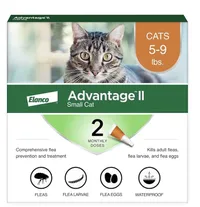Can cat fleas live on humans? A vet debunks the myths
Do we need to worry?
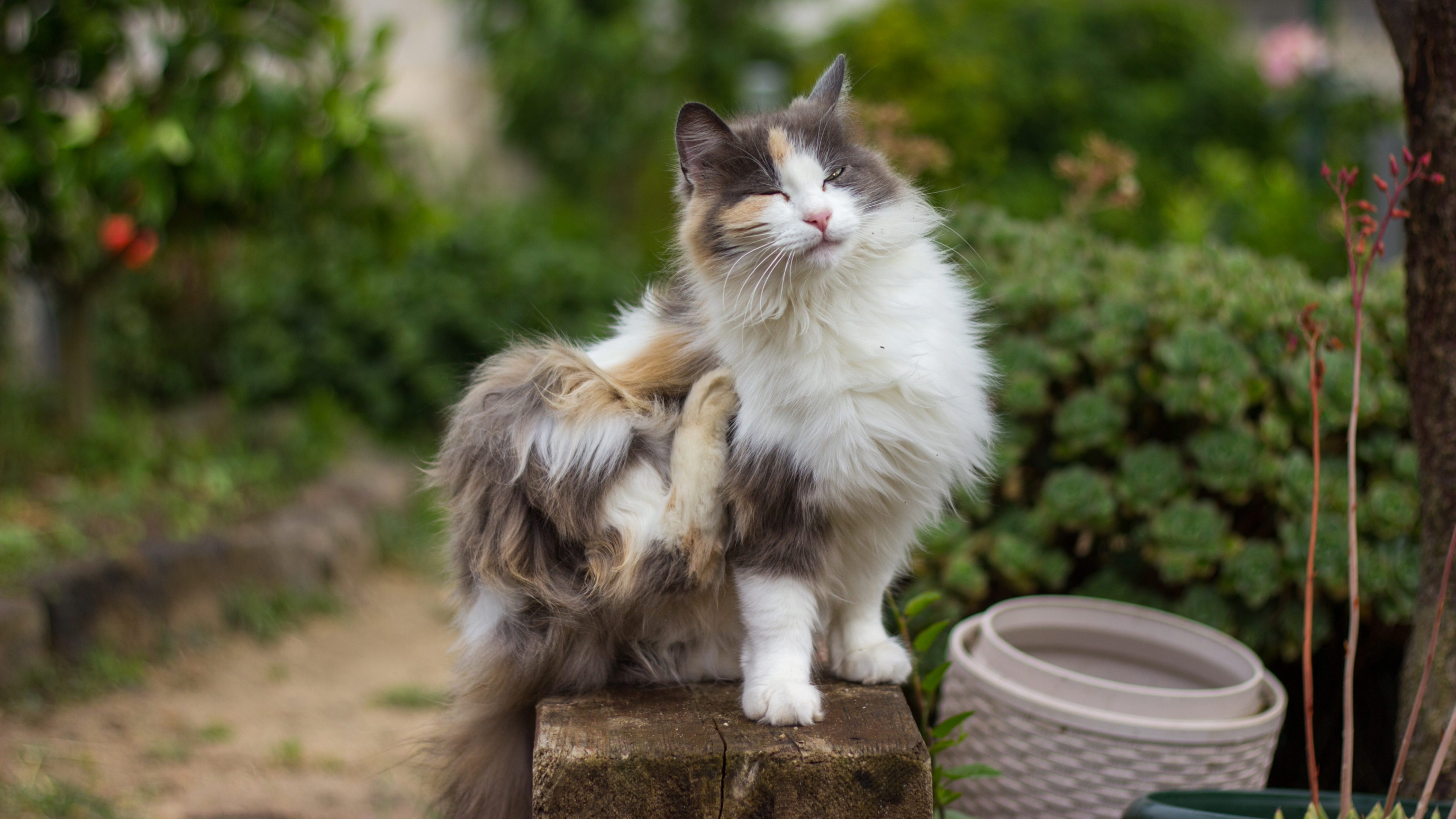
Can cat fleas live on humans? If you have a feline friend in your family it's a question you may well be asking. Thankfully, the sorts of fleas that enjoy setting up camp in your cat's fur don't like living on humans, so you don't need to worry about them becoming permanent residents on your skin.
That being said, while cat fleas won't live on you, they can still bite you. These bites can be itchy and unsightly, which is why protecting your kitty by applying one of the best topical flea treatments for cats is so important. When your cat is protected, so too are you and your home.
To make sure you know everything you need to know about cat fleas, we turned to expert vet Dr Rebecca MacMillan. Below, she explains whether cat fleas can live in your bed and whether it's okay to sleep with your kitty if you know they have fleas. Plus, we share our step-by-step guide for getting rid of a flea infestation.
Can cat fleas live on humans?
Can cat fleas live on humans? The good news is, there's no chance of that happening according to Dr MacMillan.
"Cat fleas don't live on humans. They prefer to hide in the warmer body temperatures of a cat or a dog, and like hiding in fur. If you get bitten by a flea, it is usually a one-off bite. The flea quickly recognizes its mistake and hops off again to look for an alternative host.
This means that fleas don't breed and complete their life cycle on humans. There is, however, a human flea that can infect people, but these are far less common than cat fleas and only pose a problem in certain parts of the world."
So there you go – while fleas can indeed bite humans, the flea life cycle can only continue when these critters have animals with fur or feathers that they can hide out in.
Get the best advice, tips and top tech for your beloved Pets
Can fleas live in your bed?
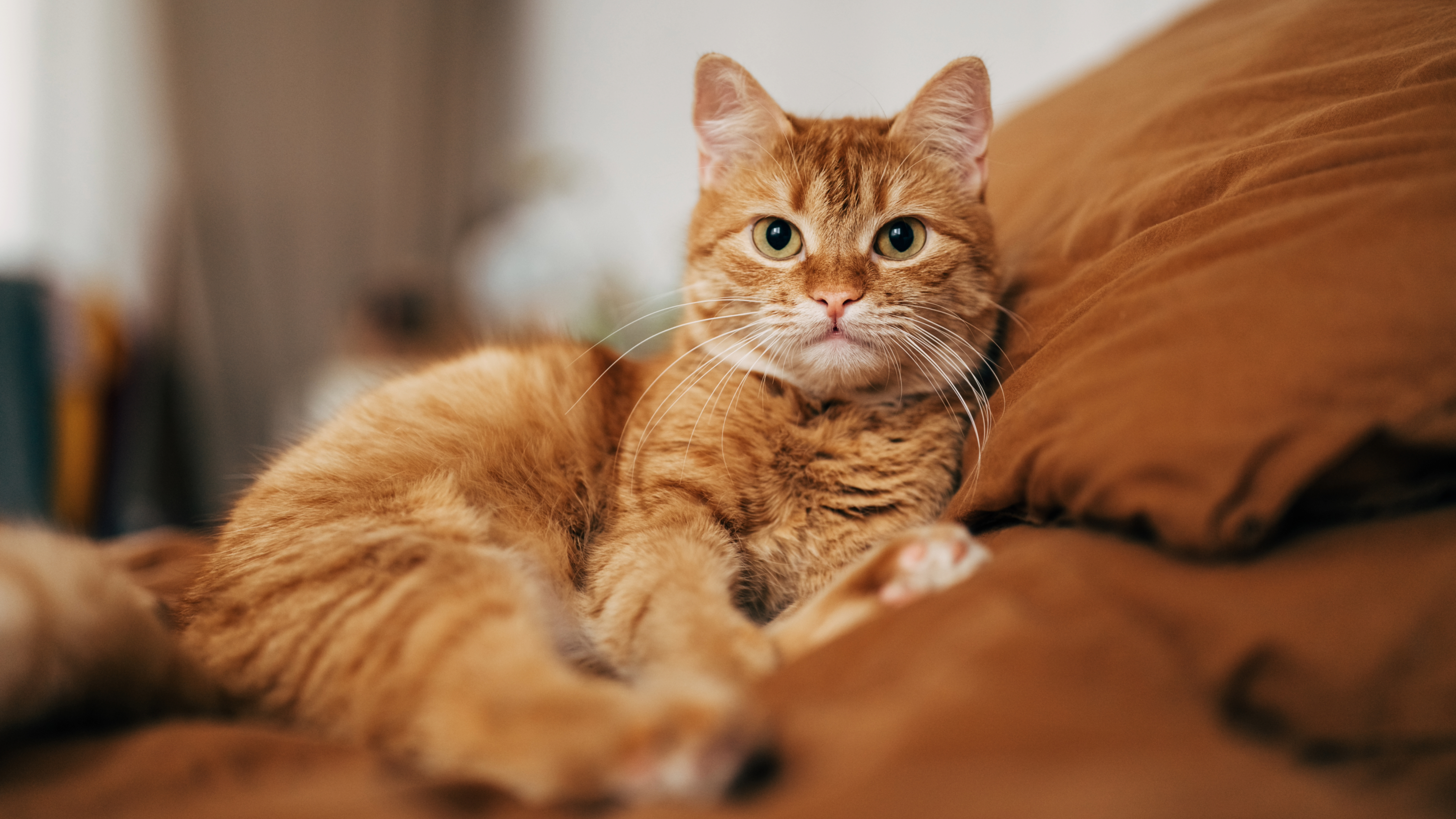
Unfortunately, cat fleas can definitely live in your bed as well as your blankets, carpets and any other soft furnishings in your home, which is why using one of the safest flea treatments for cats is so important – it won't just protect your feline friend, it will also protect you.
"Adult fleas on your cat will reproduce and lay eggs. These roll off your pet and into the environment, where they hatch out into larvae," explains Dr. MacMillan. "These small, wriggling maggot-like larvae will feed on dirt and debris. They prefer to stay away from the light, so they will be found deep in the carpet or folds of your bed, making them hard to spot.
"After a period of feeding, they will spin a cocoon and enter the pupal stage of the flea life cycle. Here, they will wait until they receive the right signals to hatch out as adults. Warmth, increased humidity, vibrations, and carbon dioxide will all encourage pupae to hatch. It's just bad luck that you might be the one to receive their first bite, particularly as you roll around in your sleep!"
So, while cozying up to your kitty at night can definitely be soothing, make sure they're protected against pesky parasites to ensure they're the only one you're sharing your bed with!
Advantage II Small Cat Topical Flea Treatment | Amazon
This vet-recommended topical flea treatment does a great job of killing all stages of the flea life cycle. Effective within 12 hours of application, it's waterproof, fragrance free and effective for 30 days.
Can I still sleep with my cat if she has fleas?
Should you let a cat sleep on your bed? We know how therapeutic it can be to turn off the lights and snuggle up with your cat – there's something so comforting about their presence and gentle purr, so we understand how reluctant you might be to boot them out of your bed.
However, according to Dr MacMillan, it's not a good idea to sleep with your feline friend if you know they have fleas.
"Reproducing fleas will drop hundreds of eggs from an infected cat, which fall into your bedding." The good news is that once you've applied an effective flea product to your cat, you can let them wander around your bedroom as normal.
"This will encourage any immature fleas already lying in wait in your bedroom to hatch out and hop onto her, rather than you," Dr. MacMillan explains. "They will then come into contact with her anti-parasite product and soon die. So, you will find that you will get on top of the flea life cycle problem much quicker if you let your cat enter all the rooms she normally does. Regularly hot washing your bedding will also help, as well as treating your home to reduce parasite numbers using an effective flea spray."
How to get rid of a flea infestation
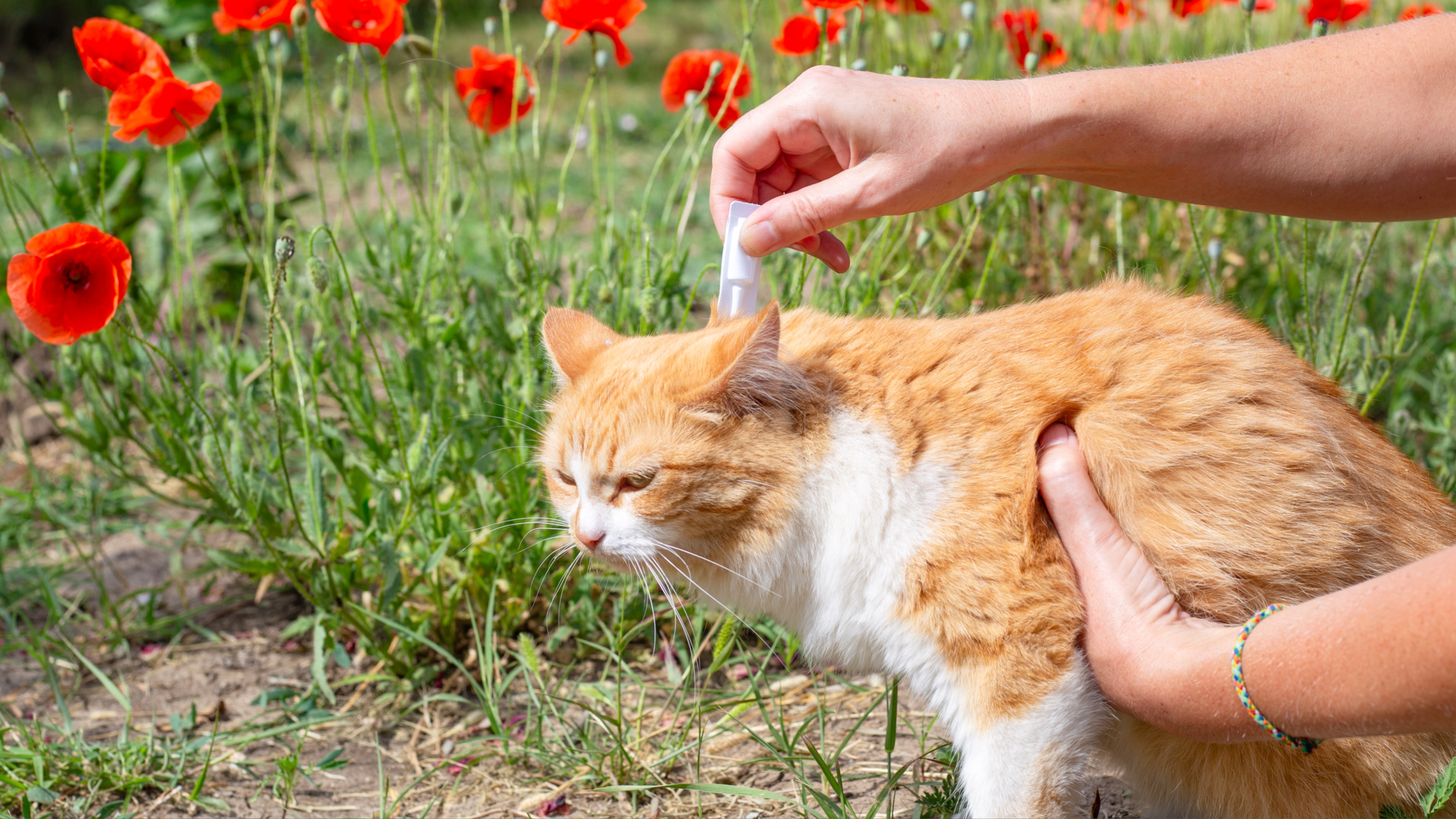
When it comes to how to get rid of fleas in your home and on your pet, there are lots of things you can do to keep these pesky parasites away. Below, you'll find a step-by-step guide for keeping your cat and your home flea-free – and it's not as tricky as you might think!
1. Groom your cat regularly
Not only are regular grooming sessions one of the best ways to bond with your cat, but brushing your kitty on a frequent basis will help you spot any fleas before they become a major issue.
2. Apply a flea treatment
When it comes to flea medicines vs flea collars, both have their pros and cons but it's not so important which one you choose – instead, what matters most is that you use an effective flea treatment to protect your cat from parasites.
If you spot that your kitty has fleas, be sure to treat them quickly as these critters are notorious for spreading diseases, which can be passed on to your feline friend.
You'll also want to note how often you need to apply your chosen treatment – most topicals need to be applied every 30 days, while collars may only need to be changed every six to eight months.
3. Vacuum regularly
If you have a cat in your family, it can be worth investing in one of the best vacuum cleaners for pet hair. Not only do these do a great job of getting rid of all that pesky fur, but a good vacuum can help you to suck up some of the flea life stages.
The warmth and vibration of the vacuum cleaner will also encourage new fleas to hatch out. While this doesn't sound like an ideal situation, if you've applied a flea treatment to your cat this is actually just what you want as those newly hatched fleas will jump straight onto your kitty where they'll be killed by the treatment.
4. Wash your cat's bedding
Flea eggs fall off your cat's coat on a regular basis and one prime place they tend to collect is in their bed. For that reason, make sure you wash their bed and bedding frequently at 60°C as this will help to kill the flea life cycle.
5. Allow your cat to access all areas of your home
As Dr. MacMillan mentioned above, once your feline friend has had a flea treatment applied, you'll want to let them have access to all the usual spots in your home. That's because fleas will hatch out and jump straight onto your cat where they'll be killed quickly thanks to the flea treatment.
In cases such as these, don't be alarmed if you see fleas on your cat once you've treated them – that's just all the newly arrived fleas that haven't yet been killed by the treatment (most topicals take around 24 hours to get this job done).
Read next: How often to treat cats for fleas and how cats get fleas
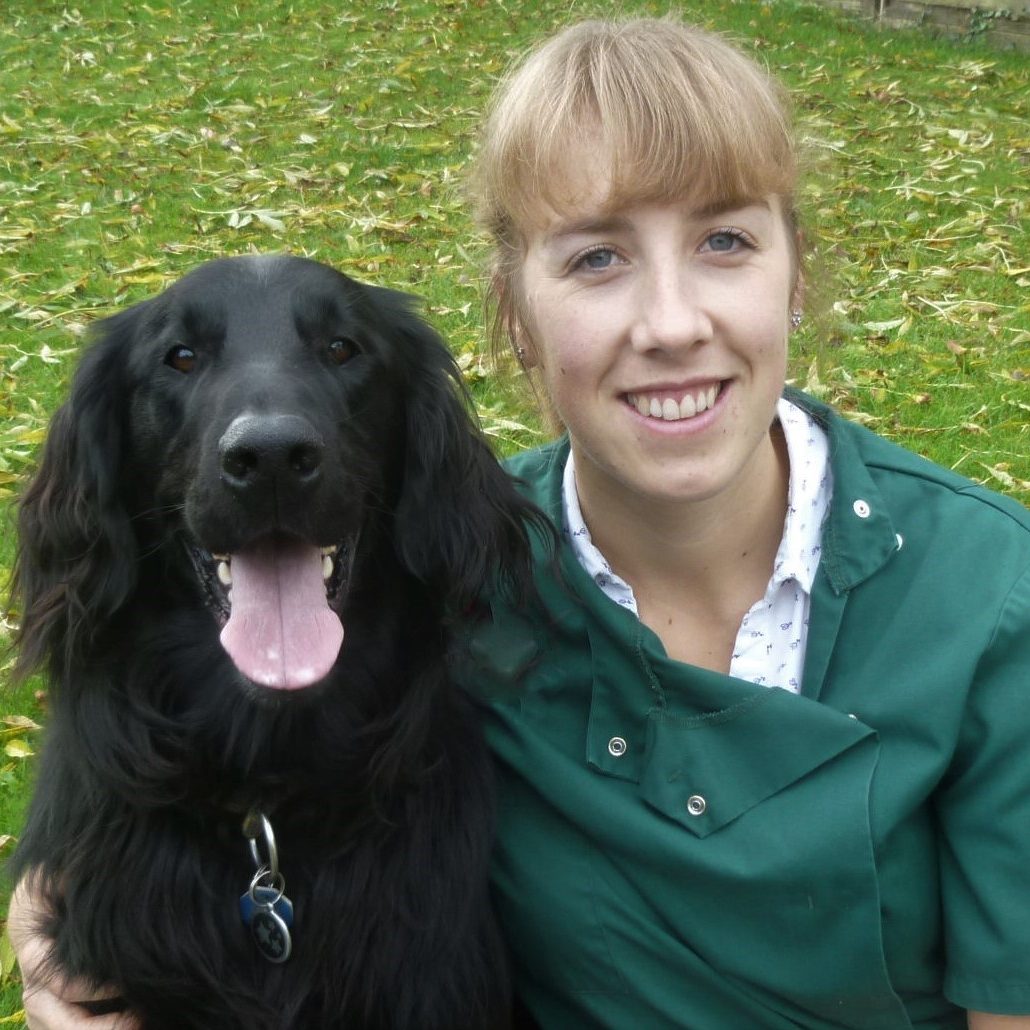
Rebecca is a vet surgeon who graduated in 2009 from the Royal Veterinary College in London. She has a wealth of experience in first opinion small animal practice, having done a mixture of day-to-day routine work, on-call emergency duties and managerial roles over the years. She enjoys medicine in particular and she is proud to have recently achieved a BSAVA postgraduate certificate in small animal medicine (with commendation). She writes on various feline and canine topics, including behavior, nutrition, and health. Outside of work and writing she enjoys walking her own dog, spending time with her young family and baking!
Edited by Megan Milstead.
This page was last updated in August 2025 by Kathryn Williams.

Kathryn is a freelance writer who has been a member of the PetsRadar family since it launched in 2020. Highly experienced in her field, she's driven by a desire to provide pet parents with accurate, timely, and informative content that enables them to provide their fur friends with everything they need to thrive.
Kathryn works closely with vets and trainers to ensure all articles offer the most up-to-date information across a range of pet-related fields, from insights into health and behavior issues to tips on products and training.
When she’s not busy crafting the perfect sentence for her features, buying guides and news pieces, she can be found hanging out with her family (which includes one super sassy cat and a kitten), drinking copious amounts of Jasmine tea and reading all the books.
She has written for a range of publications, including Fit&Well, Top Ten Reviews, LiveScience, Goodto, and Product Hunt.
